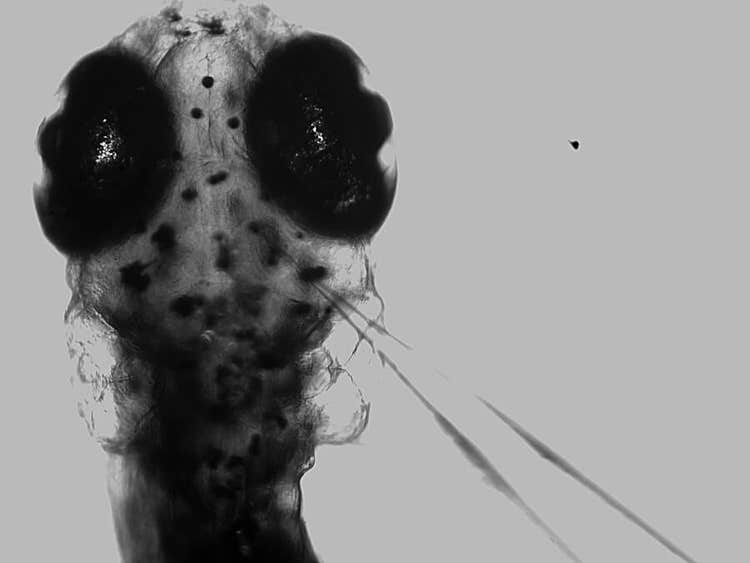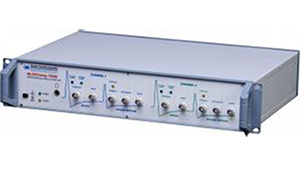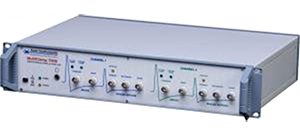
York University uses Axon Patch-Clamp instruments to investigate the roles of pannexin channels in epilepsy
COMPANY/UNIVERSITY
York University
TEAM MEMBERS
Georg Zoidl
Paige Whyte-Fagundes
PRODUCTS USED
MultiClamp 700B Microelectrode Amplifier
Axon Digidata 1550B Low-Noise Data Acquisition System plus HumSilencer
pCLAMP 11 Software Suite
The Challenge
The Zoidl lab at York University, Canada, investigates the roles of pannexin channels in the nervous system in both physiological and pathological contexts, primarily using zebrafish larvae as the model organism in their research.
The focus is to settle a conflict in the literature about the role of pannexin1 (Panx1) in seizures that has been ongoing for the past decade.
Taking advantage of gene editing panx1 genes to create loss of function mutations, the Zoidl lab has established an epilepsy model in zebrafish to answer the question of whether Panx1 channels have distinct roles in seizures. Using electrophysiological tools, they record local field potentials from seizure activity in selected neuronal networks of 6 – 7-day old zebrafish larvae in vivo.
The team keeps the neurocircuitry intact during recordings and pairs electrophysiology data with results from behavioral phenotyping experiments, allowing them to gain new insights into the role of Panx1 in epilepsy. Like many other electrophysiologists, they are required to deal with the challenge of line-frequency noise interference in their electrophysiology rig.

The solution
The Axon Digidata 1550A/B HumSilencer feature allows the team to eliminate the 50/60Hz line-frequency noise, revealing the biological signal. The built-in adaptable HumSilencer feature can adapt to changing line-frequency noises over time. The adaptive noise learning can be disabled in special circumstances so that the patterns of noises can be stored during the entire course of recording. The stored noise pattern can be reset before or after the end of each new recording.

pCLAMP 11 Software Suite

Axon Digidata 1550B Low-Noise Data Acquisition System plus HumSilencer

MultiClamp 700B Microelectrode Amplifier

Axon Instruments Patch-Clamp Amplifiers
Products Used
Equipped with up to four HumSilencer™ channels, the Axon™ Digidata® 1550B Low Noise Data Acquisition System enables you to record multiple cells at once for cellular network studies without 50/60 Hz line-frequency noise. The MultiClamp™ 700B Microelectrode Amplifier is a versatile, computer-controlled microelectrode amplifier designed for patch voltage-clamp or high-speed current clamp recording within the same headstage. With many automated functions and effective signal conditioning ideal for many applications including high-speed current clamp, patch clamp, voltammetry/amperometry, ion-selective measurements, and bilayer recordings.
The Results
The senior PhD student, Paige Whyte-Fagundes, has been integral in establishing the electrophysiological setup to record the zebrafish in vivo and piloting the project investigating Panx1 in epilepsy.
The team members intend to use their current electrophysiological setup to investigate physiological variances in the neural circuitry of pannexin channels across a range of genetically modified zebrafish lines. So far, they have been able to address fundamental questions regarding brain rhythms associated with the visual processing of light stimuli in panx1 knockout fish. They have also established the neuroprotective properties of Panx1 in their seizure model and also have uncovered a way to repurpose an FDA approved drug to reduce seizure activity in zebrafish.
In a recent paper, they report on the relationship between panx1a knockout in zebrafish, altered visuomotor behavior and dopaminergic signaling, in research that combines RNA-seq analysis, Real-Time PCR, visual-motor behavior analysis and in vivo electrophysiology.
Visuomotor deficiency in panx1a knockout zebrafish is linked to dopaminergic signaling
You can find out more about the Georg Zoidl Lab on their ResearchGate profile